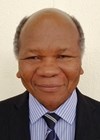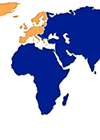Sub-Saharan Africa presents great challenges relating to access to healthcare. Due to insufficient training opportunities there is a shortage of ENT surgeons, audiologists and speech therapists in the region. Therefore there are tremendous opportunities to improve access to ENT and hearing care by focusing on education and training. I am currently developing the AfHNS Clinical Practice Guidelines for Head & Neck Cancers in Developing Countries and Limited Resource Settings (https://developingworldheadandneckcancerguidelines.com).
Our ENT department in Cape Town trains ENT specialists from all over Africa, and runs the only fellowships in head and neck, rhinology and paediatric otolaryngology in Sub-Saharan Africa. Through these trainees, both past and present, we have a wonderful network of colleagues and friends all over Africa, and through them have learned about the opportunities to address challenges in Africa. I therefore look forward to serving as a Global Ambassador for the Southern African region, and to sharing the challenges, opportunities and successes relating to training and education in Africa with the international readership.
Latest Contribution
Addressing ear and hearing care through task sharing: the Malawian experience
How can ear and hearing care be addressed in a setting with limited resources? Wakisa Mulwafu, Chris Prescott and Johan Fagan present an innovative model for training ear surgery technicians to perform endoscopic myringoplasty under local anaesthesia on a large...
Prof ED Kitcher
Much has been said of the paucity of ENT Services in Africa [1]. Whilst Ghana has always been at the forefront of healthcare in Sub Saharan Africa, its ENT and allied services were somewhat suboptimal in the 1980s. This article,...
Clinical leadership and management: developing world ENT
I have been asked to share some of the initiatives I have been involved with to address ENT-related challenges in Africa and the developing world. Developing countries constitute the majority of the world’s landmass (Figure 1), are home to >50%...






